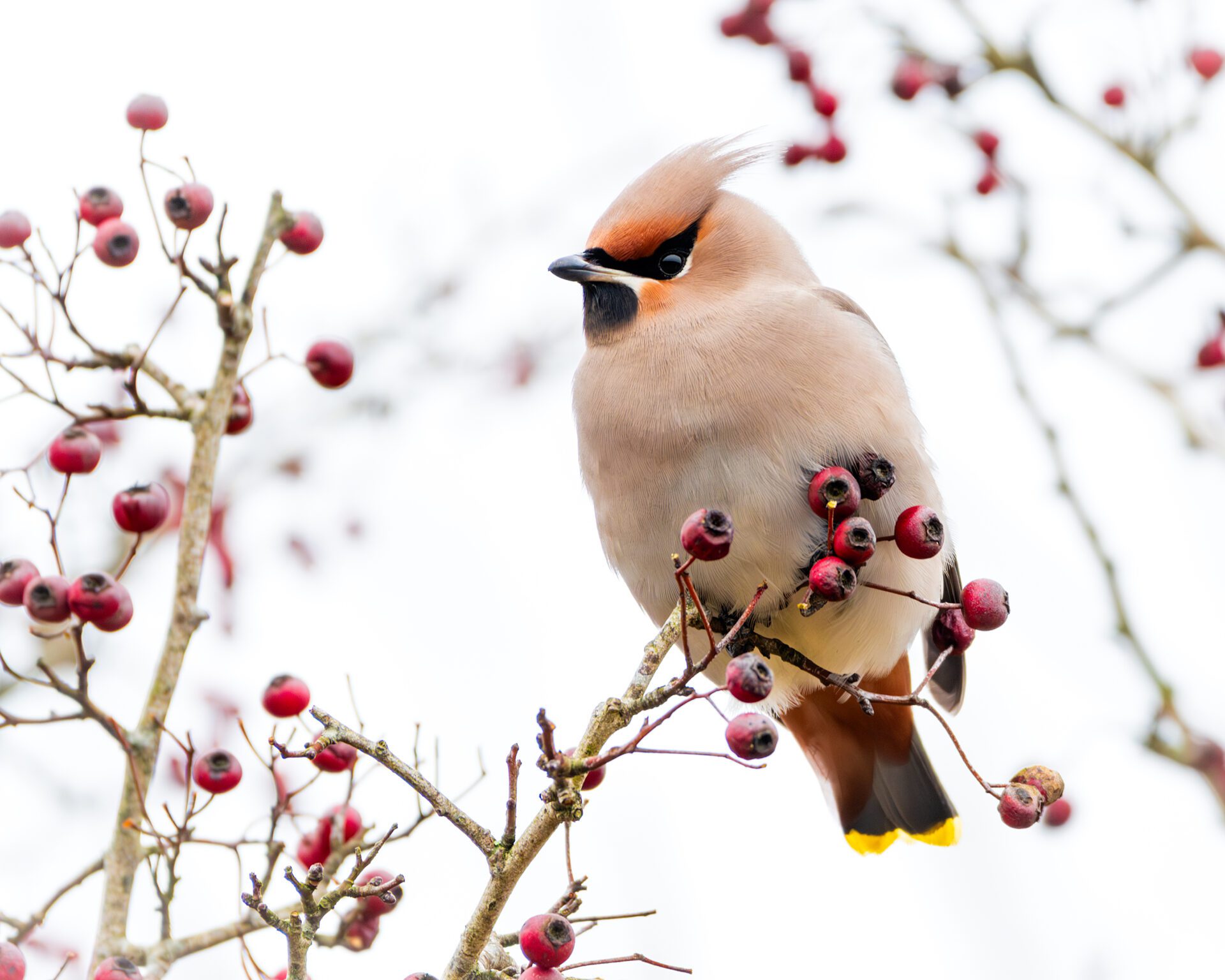Waxwing in Tomhaggard, Co. Wexford. Photo: Declan Roche.
Winter brings with it much anticipation as people prepare for festivities with family and friends. Will we have a white Christmas? Will your visiting Aunt cause a commotion over Christmas dinner again? Will you remember to buy the cranberry sauce this time?
For birders in Ireland and the UK, there’s another question that comes around as predictably as the season itself each year – will we have a Waxwing winter?
For those unfamiliar, a Waxwing winter is one in which there is an influx of Waxwings to the country. This is a phenomenon that can’t be taken for granted. After all, this is a bird that usually winters in Southern Scandinavia, while its breeding range extends from Finland eastwards across Siberia and into northernmost North America.

Waxwing in Glenealy, Co. Wicklow. Photo: John Murphy.
So, why do these birds end up in Ireland at all? It all comes down to berries. In winter, Waxwings are highly dependent on berries as a food source and feed almost exclusively on them, mainly those of Rowan and Pyracantha. These birds are so dependent on berries as a food source, in fact, that they are quite literally willing to go the extra mile to get them. When berry supplies in their usually wintering countries are exhausted prematurely – something which can often happen during a good Waxwing breeding season – these birds will travel south in search of food. Such was the case this year. In the past number of weeks, people around the country have been gleefully reporting sightings of these stunning birds. With their perfectly coiffed crest, black bandit mask and red wax-like droplets on their wing feathers, these birds look like something you would see on the front of a Christmas card.

Waxwing in Glenealy, Co. Wicklow. Photo: John Murphy.
Just as many of us enjoy devouring mince pies and chocolate over the winter period, so too do Waxwings like to indulge in their favourite foodstuffs. Studies have shown that Waxwings can eat up to three times their own body weight in berries a day. As a flock – known as a “museum of Waxwings” – can clear a shrub or tree of berries very quickly, they won’t spend too long at any one location. With that in mind, if you hear that there are Waxwings in your area, try to get out to see them as soon as you can!
Waxwing in Islandbridge, Dublin. Photo: Paul Campbell.
In recent weeks, Waxwings have been spotted in Glenealy, Co. Wicklow, Knocklyon, Co. Dublin, Ballycastle, Co. Antrim and several other places. If you want to catch a glimpse of them this winter, they are often seen in supermarket car parks, town centres, gardens, and anywhere else with berry-laden trees and shrubs.
If you see a Waxwing this winter, we would love to hear from you and see your images. Please send photos and videos to us via social media, or to alewis@birdwatchireland.ie. We will be sure to credit you by name should we share them.
Waxwing in Islandbridge, Dublin. Photo: Darren’s Wildlife Photos.




